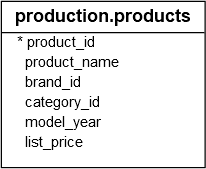Summary: in this tutorial, you will learn how to use the SQL Server ANY operator to compare a value with a single-column set of values returned by a subquery.
Introduction to SQL Server ANY operator
The ANY operator is a logical operator that compares a scalar value with a single-column set of values returned by a subquery.
The following shows the syntax of the ANY operator:
scalar_expression comparison_operator ANY (subquery)
Code language: SQL (Structured Query Language) (sql)In this syntax:
scalar_expressionis any valid expression.comparison_operatoris any comparison operator.subqueryis aSELECTstatement which returns a result set of a single column with the data is the same as the data type of the scalar expression.
Suppose the subquery returns a list of values v1, v2, …, vn. The ANY operator returns TRUE if any comparison (scalar_expression, vi) returns TRUE. Otherwise, it returns FALSE.
Note that the SOME operator is equivalent to the ANY operator.
SQL Server ANY operator example
See the following products table from the sample database.

The following example finds the products that were sold with more than two units in a sales order:
SELECT
product_name,
list_price
FROM
production.products
WHERE
product_id = ANY (
SELECT
product_id
FROM
sales.order_items
WHERE
quantity >= 2
)
ORDER BY
product_name;
Code language: SQL (Structured Query Language) (sql)In this tutorial, you have learned how to use the SQL Server ANY operator to compare a value with a single-column set of values.